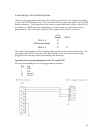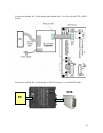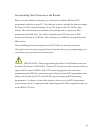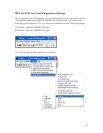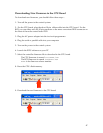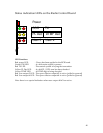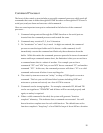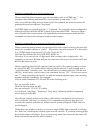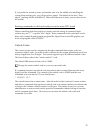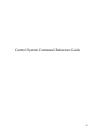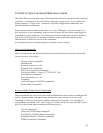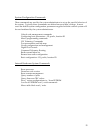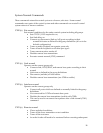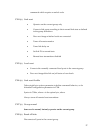50
Command Processor
The heart of the control system includes a powerful command processor which reads all
commands that come in either through the DTMF decoders or through the CPU board’s
serial port, analyzes them and executes valid commands.
Here are some important concepts to understand in the behavior of the command
processor…
1. Command strings entered through the DTMF decoders or the serial port are
inserted into the command processor and treated the same.
2. Commands may consist of 2, 3, 4 or 5 characters.
3. No “terminator” or “enter” key is used. As digits are entered, the command
processor scans the input buffer and if it detects a valid command, it will
immediately execute the command and flush only those characters from the
buffer. While this makes the command processor powerful in terms of command
names and keeps commands names short, the limitation is that you can not have
a command name that is a subset of another. For example you can have
commands “123” and “456” but you can NOT have a command “12” and another
command “123”. In this case, the command processor will detect “12” as a valid
command and execute it before it sees anything else.
4. The control system never uses an “unkey” or drop of COR signal to execute a
command. This lets you run full time linked systems including VOIP and
microwave systems and not rely on a loss of COR to execute.
5. Commands can be strung together. For example, commands 123, 456 and 789
can be run together as “123456789” and all three will be executed properly and
again, no unkey is required.
6. When a valid command is decoded, the system will generate “function
complete” telemetry. This indicates that a command was executed. You will
hear a function complete tone for each valid function. The default tone set for
function complete is “beep beep” of two 1064 Hz beeps of about 100 ms. duration.



